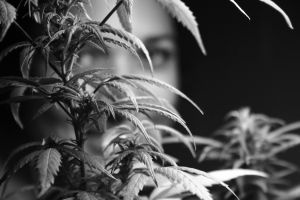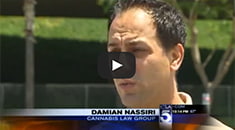Medical Marijuana in America: A History
Even if the legal battles we are fighting over the right to lawfully use and dispense marijuana are new, the plant itself – and its relevance in America – is not. 
In fact, a recent story by the Associated Press chronicles the history of the plant in this country dating back to colonial times (recognizing that marijuana had, of course, been renowned for much longer).
Our Los Angeles marijuana lawyers believe that as we head into a new year, it’s important to get a perspective on how far we’ve come, in order to get a better grasp on where we’re headed.
Interestingly, both Presidents George Washington and Thomas Jefferson grew hemp, which is a variety of cannabis similar to marijuana. Both early presidents had trouble finding the best way in which to process the plant for the purposes of rope and clothing. In fact, Jefferson even invested a device that made processing hemp much easier.
Hemp was grown by the colonists shortly after they arrived in America in the early 1600s. Primarily, it was used to create ropes that would be used on ships. At first, the products were exported to England. Later, during the Revolutionary War, it became critical for the budding country’s own shipping industry, as well as for clothing for soldiers. In fact, some colonies offered hemp farmers subsidies to grow as much as they could.
Starting in the mid-19th century, a wave of intellectuals became interested in consuming cannabis for its intoxicating properties after reading such Oriental and Middle Eastern literature singing its praises.
Then following the Civil War, doctors began to heavily prescribe powerful opiates to surviving soldiers suffering from chronic pain. However, this led to an epidemic of addiction, which prompted the 1906 Pure Food and Drug Act, which was the start of opiate regulations – including for cannabis.
Around that time, the Associated Press wire service was just taking off, and there were reports from Mexico detailing violence among those who smoked the drug.
But it was beginning to remain popular among jazz musicians – perhaps most famously, Louis Armstrong, who was arrested in California back in 1930 for marijuana possession. He was given six months in jail, but the sentence was suspended. Later, he would pen a letter to President Dwight Eisenhower, urging him to legalize the drug.
That didn’t happen.
Following the repeal of alcohol prohibition in 1933, the chief of the federal Bureau of Narcotics shifted his focus to marijuana. His exaggerations and outright lies regarding crimes supposedly committed by those under the influence of marijuana led to the now cult classic propaganda film, “Reefer Madness,” which showed how quickly young people could become insane as a result of smoking cannabis.
The film was made back in 1936, a year before Congress voted to outlaw marijuana. The movie later became a a hit among marijuana users and advocates in the 1970s.
Following WWII, marijuana came to represent to many a symbol of counterculture, and Congress continued to step up penalties for all types of drug crimes starting in the 1950s. This was around the time when the theory of marijuana as a “gateway drug” emerged.
It wasn’t until the 1970s that the first wave of advocates began to push for decriminalization. This included the findings by a commission of scholars appointed by President Richard Nixon to research the drug. To his surprise, the commission recommended decriminalization and regulation. He did not follow that advice.
Then we had the 1980s, with the “Just Say No” movement. This advocacy proved the religious right was a force to be reckoned with in their push for stiffer drug laws, which were supported by First Lady Nancy Reagan.
Still, doctors continued to test marijuana’s viability as medicine (never mind that it had been used for such as far back as in ancient China). This research, combined with the AIDS epidemic, led to the legalization of medical marijuana in California in 1996.
Which brings us to the battles we continue to fight today. Our Los Angeles marijuana lawyers believe in the effectiveness of this plant as medicine, and are committed to defending the rights of those who benefit from its use under state law.
The Los Angeles CANNABIS LAW Group represents growers, dispensaries, collectives, patients and those facing marijuana charges. Call us at 949-375-4734.
Additional Resources:
A history of pot, from George Washington to legalizing ganja, Dec. 6, 2012, By Gene Johnson, The Associated Press
More Blog Entries:
Los Angeles Marijuana Lawyers: Navigating Tax Law for Dispensaries, Nov. 23, 2012, Los Angeles Marijuana Lawyer Blog
 Cannabis Law Group's Medical Marijuana Legal Blog
Cannabis Law Group's Medical Marijuana Legal Blog




